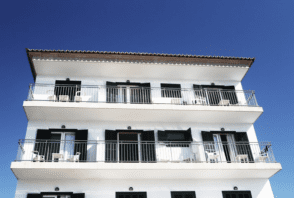Aluminium doors are found in many places from your home to offices and shops around town. While selecting the right aluminium door shouldn’t be a headache, there are…

11 Proven Home Improvements for Enhancing Energy Efficiency
Home energy prices can go up and down, changing from season to season and year to year. One month, the cost of keeping your home warm seems very affordable; the next month, your electricity bill seems like a financial burden.
But no matter what the cost of electricity and gas, there is always a need for an efficient home. From fast and simple to large and complex, there are lots of options to make your home energy efficient.
Whether you want to make basic changes or rejuvenate your home with innovative technology, here are 11 smart steps you can take to improve energy efficiency at home.
1. Insulate the Attic
If you are losing heat or cold air in your home, there’s a significant chance that most of it are seeping out through the attic. According to the Australian Government, as much as 35% of heat loss in the winter and heat gain in the summer happens through the ceiling and attic. This makes the top of your home the biggest culprit, but fortunately also presents a large, easy target.
Insulating the attic can significantly reduce energy loss, helping trap the comfortable temperatures in your home and hold them tight for days or weeks. Insulating the attic is fairly easy, fast, and affordable. If you hire a professional, the project can be completed in a single day (unless you have a large home) and it shouldn’t cost much more than $2,000-$3,000 to complete, depending on the size of your home, the local market, and prep-work, such as taking out old insulation or preparing attic surface.
2. Replace the Furnace
While it’s certainly possible to have an old furnace that is just as efficient as a modern unit, if you have a furnace that is a few decades old, you could be losing lots of cash in energy costs. There have been some significant technological advancements in home heating equipment, and modern furnaces help keep your home comfortable while using less electricity or gas.
The replacement may not be completely necessary. In some cases, you can get by with a repair or tuneup from a qualified professional. Talk with your local HVAC professional to have them inspect your unit and you may discover significant changes that can enhance your home efficiency.
3. Bundle-Up Your Water Heater
There are, essentially, two common types of water heaters: storage tank and tankless. Most homes still have storage tank heaters, which hold roughly 55 gallons, keep the water hot at all times, and dispense the water at your command. (Tankless heaters use coils to heat water immediately instead of storing hot water.)
The storage tank water heater in your home is constantly fighting an uphill battle. The tank in your unit holds water and keeps it piping hot so it’s ready for your showers, dishes, and hand-washing needs. The problem: it’s using lots of energy to heat water and keep it at an ideal temperature.
One of the ways to improve your water heater’s efficiency is to give it a nice cozy jacket. An insulated blanket wraps around the heater and helps keep water hot for hours, allowing the appliance to use less energy to constantly reheat the water. HouseLogic claims that this measure can cut heat loss by as much as 45%.
4. Replace Your Old Windows and Doors
Your old windows and doors can be serious drags on your home’s efficiency. They allow heat to escape through cracks and inefficient construction, which forces your heating system to constantly work to keep up.
Whether or not your windows need replacing depends on a wide variety of factors. This includes how well the seals are holding up (in some cases, simple caulking can solve heating loss), the type of glass your windows use, and the overall construction of the windows. (Single vs. double-pane, for example.)
If you can feel cold air coming in through cracks in the windows or feel a general cold spot next to windows, it may be time for a replacement. You could also notice frost on cold mornings or condensation on hot afternoons. Any of these could signal that it’s time for new windows.
Want to know how much you can save with energy-efficient windows? Check out this post.
5. Add Timers to Lights
Light timers can also be used as a security tool, but for the sake of this article, we’re going to discuss their advantages for saving energy and making a home more efficient. Light timers are affordable and easy to set up, and many can be connected to a smartphone or mobile device for added versatility.
Depending on the model you purchase for your home, you can have a light timer that turns off lights after a couple of hours (so you don’t have to worry about forgetting) or you can have a version that can shut off your lights through commands sent via your smartphone.
6. Place Door Sweeps Near Entryways
This step is less high-tech than light timers, but still effective. Much of the air escaping from your home goes through the small, often unnoticeable gap between the floor and your door. A door sweep is little more than a small strip of rubber or vinyl that covers the gap in your doorway.
This piece of equipment blocks air from the outside, significantly reducing overall heat transfer. Most door sweeps are attached to the bottom of the door, so once they are installed you shouldn’t have to bother with them. They come in wrap-around, L-shaped, and staple-on forms, as well as many other styles. Often the type of sweep you select will be dictated by the type of door you have, including the width, depth, and material, such as metal or wood. Ultimately, energy efficiency also depends on what material your doors are made of, so choose wisely.
7. Plant Shady Trees Around Your Home
Not everyone has this luxury, but if you do, it’s a great way to cut back on air conditioning costs in the summer. Planting trees around your home provides shade, significantly reducing the amount of heat penetrating into your home. While this is obviously a long-term step (you’ll need at least a few years for the trees to grow), the shady leaves are an eco-friendly way to add visual beauty and energy efficiency to your house.
The best trees to plant are “deciduous” trees. These are the classic leaf-shedding trees that we all recognise. The reason they are so effective for efficiency is that they grow sun-blocking leaves in the summer, reducing heat exposure, then shed their leaves and allow warming sunlight to hit your home in the winter.
8. Install a Programmable Thermostat
We’re getting back into the high-tech world now. Digital thermostats can constantly change the settings for your home, allowing you to keep the house cool or warm with manual adjustments.
However, if you are going to install a thermostat that can adjust your heat settings automatically, you actually need to program it. (Insightful, huh?) Many people purchase and install a programmable system but still use the “hold” setting, which defeats the purpose of buying the technology in the first place.
9. Place Foam Insulation Around Water Pipes
When water travels from the heater to the faucet, it travels through pipes that are often cold. These pipes are usually uninsulated, allowing heat in the water to escape. One simple way to combat this effect is to wrap the pipes in foam insulation rolls. These rolls easily wrap around the pipes and keep the water warm while it is being delivered to your kitchen or bathroom. Using foam insulation on the pipes can be especially effective if your basement is unfinished and unheated.
According to the U.S. Department of Energy, insulating hot water pipes can also raise water temperature about two to four degrees Fahrenheit, and, as an added bonus, you won’t have to wait as long for warm water to reach the faucet!
10. Consider a “Cool Roof”
A relatively new innovation in home efficiency, “cool roofs” are designed to reflect sunlight and absorb less heat, creating a home that is more efficient during hot summer months. Essentially, the principle is the same as wearing light colours on a hot sunny day: a white shirt reflects light and heat, while a black shirt absorbs them.
During the heat of summer, you can likely reduce your total energy bill if you consider a cool roof. While this is one of the most expensive and time-consuming measures, it can lead to significant long-term savings. While we’re on this, energy-efficient glass is another proven way to promote energy efficiency in your home.
11. Change the Light Bulbs All Through the Home
The light bulbs in your home may be racking up the energy bill. According to the E3 Program, the lighting in your home accounts for roughly 12% of your overall energy bill. For commercial areas, it accounts for as much as 40% of electrical consumption!
The traditional pear-shaped bulbs that we knew for years have been phased out for more efficient models. The old incandescent bulbs waste about 90% of their energy consumption, mostly through producing heat. If you still have incandescent bulbs, replace them as soon as possible and your home will use far less energy on a regular basis.
New Windows and Doors for an Efficient Home
If you are considering new windows and doors for your home, BetaView has a full selection of top-quality products that meet the meticulous Australian quality standards.
From aluminium French and hinged doors to double-hung windows, we have the right products for your home!
Categories
- Aluminium Doors
- Aluminium Windows
- Bi-Fold Doors
- Causes We Support
- Contracts and Business
- Double Hung Windows
- Energy Efficiency
- Events / Trade Shows
- FAQ Series
- Hinged Doors
- Home Decor Tips
- Home Renovation
- Home Security
- Infographics
- Louvre Windows
- Other
- Outdoors
- Sliding Doors
- Sliding Windows
- Stacker Doors
- Trends
- Uncategorized
- WERS Rating Scheme













